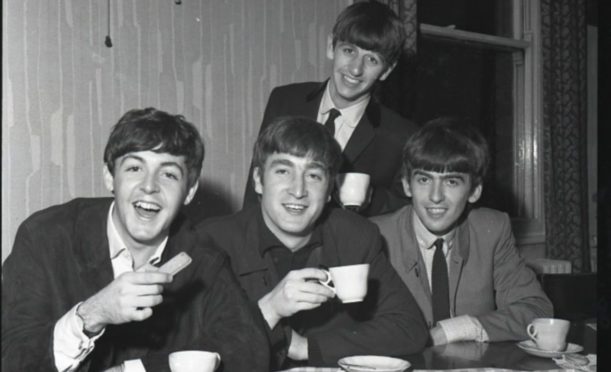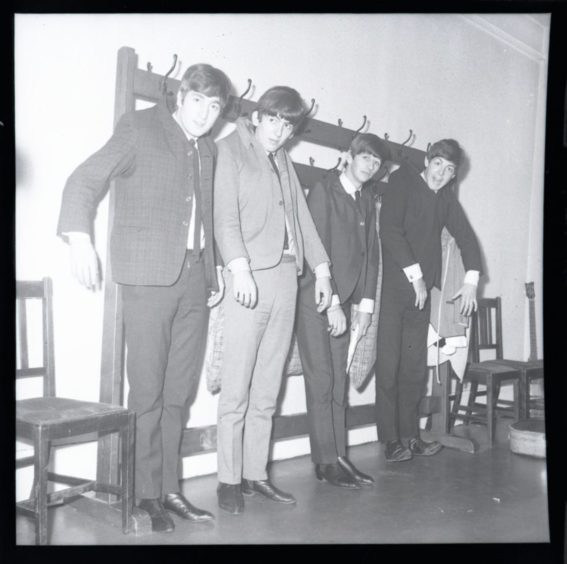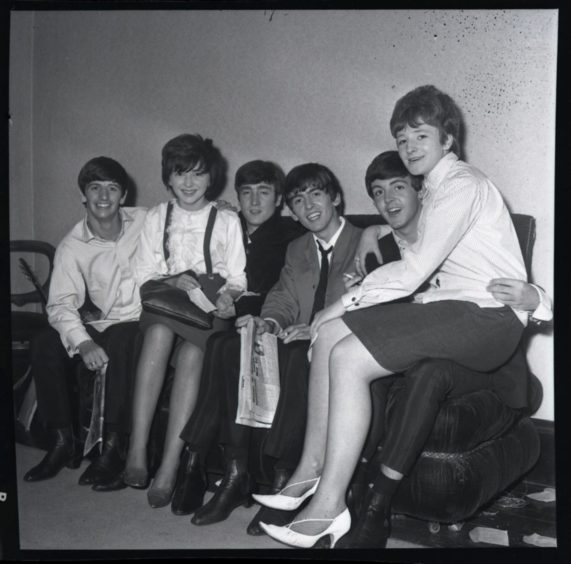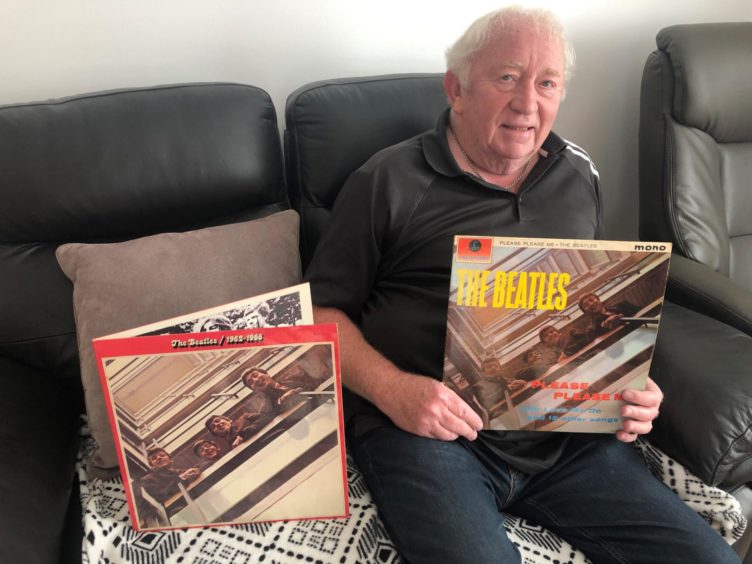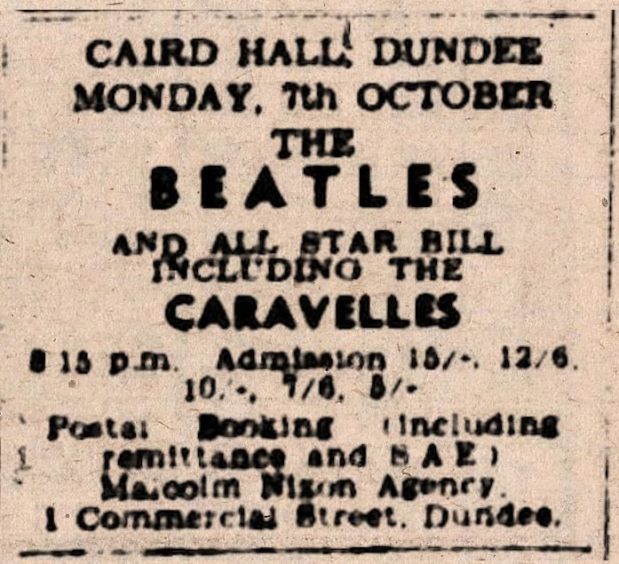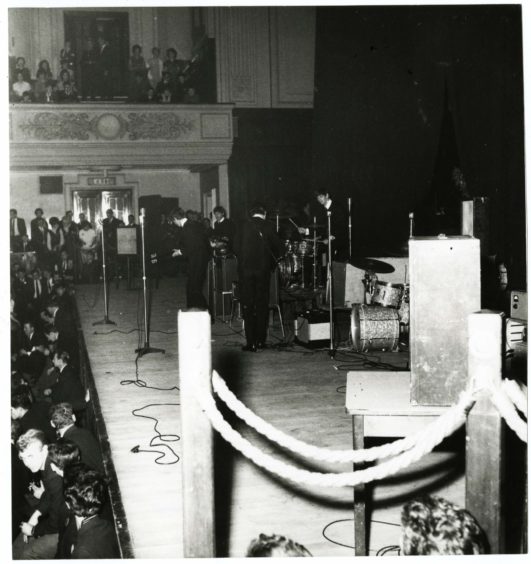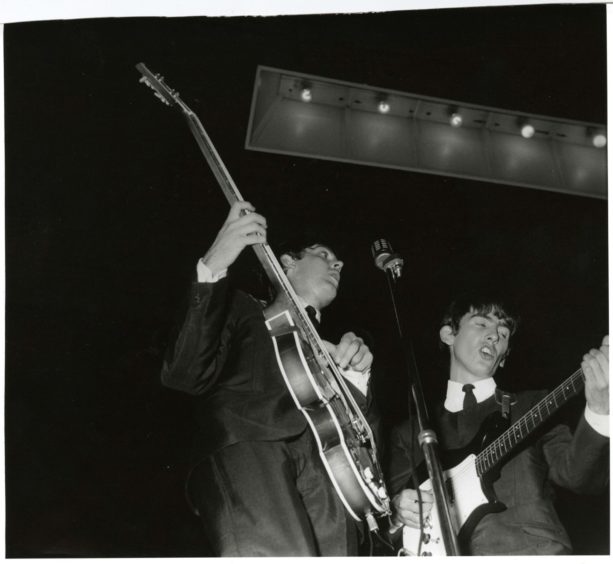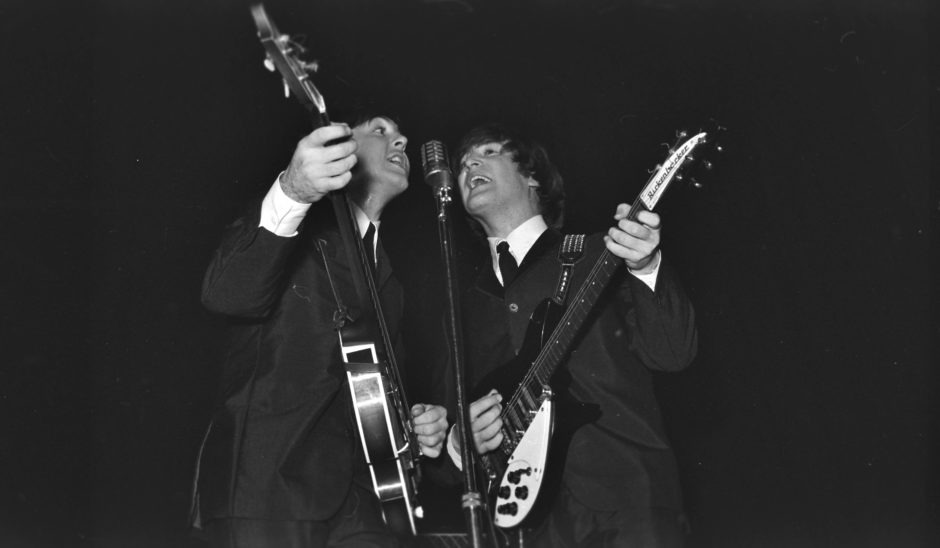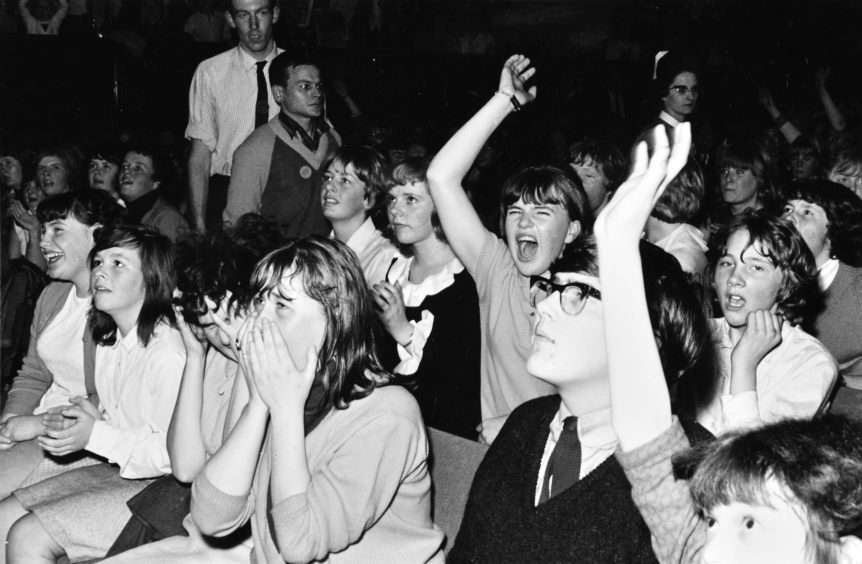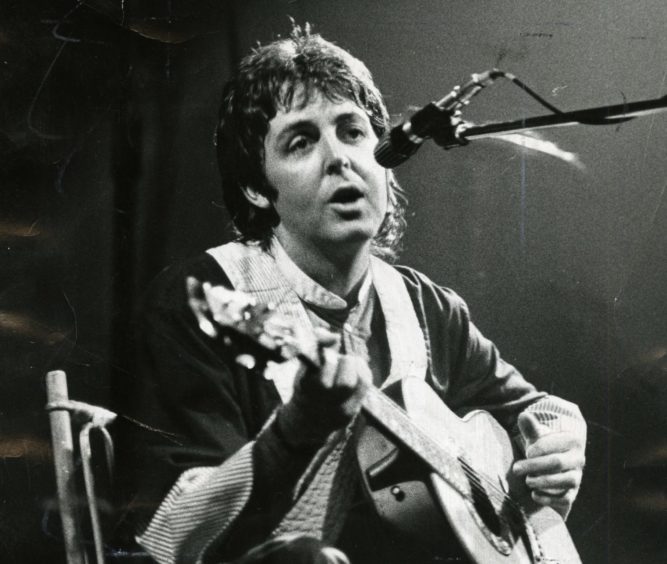It was the end of an era when The Beatles broke up 50 years ago. Gayle Ritchie looks back at the first time the Fab Four played Dundee’s Caird Hall, on October 7 1963, and chats to a fan who had a front row seat.
The headline said it all – “Paul quits the Beatles”.
The news, on April 10 1970, came as a huge shock to the band’s millions of fans.
The Beatles had been founded just 10 years earlier with a line-up of John Lennon, George Harrison and Paul McCartney with Ringo Starr taking over as the band’s drummer in 1962.
Having started off playing gigs in their home city of Liverpool, most famously at the Cavern Club, crowds of screaming fans from across the globe world were soon treated to extraordinary concerts.
The Fab Four were a social phenomenon in the 60s, influencing the hair styles, clothes and musical tastes of millions, and placing an indelible mark on the history of show business.
However, years of in-fighting, jealousies and behind-the-scenes tensions had dogged the Beatles since their rise to superstardom with the release of their first hit, Love Me Do, in late 1962.
There was the strain of the Beatlemania phenomenon, the death of manager Brian Epstein in 1967, Paul McCartney’s “domineering” role, John Lennon’s relationship with Yoko Ono, George Harrison’s prolific songwriting output, and associated managerial disputes. All of these factors resulted in what some have described as “Beatles Blues”.
Modfather Paul Weller, a massive Beatles fan, took the news badly and was recently quoted as saying: “I was shattered. The Beatles were my entire universe”, describing the band as “four prophets from the north”.
But he said he understood the split was inevitable because “they couldn’t have gone on into the 70s”.
Legal disputes continued long after the shock announcement, and the band’s dissolution was not formalised until 1974.
Dundee-mania
Seven years before the band broke up, at the height of Beatlemania, the band played Dundee’s Caird Hall.
The date was October 7 1957 – 57 years ago today – and they performed two shows at the venue.
The event was the third and final gig of a mini-tour of Scotland, with local promoter Andi Lothian at the helm.
The Dundee gig was one of the most hotly-anticipated, and subsequently most famous, gigs to have graced the Caird Hall.
Retired plumbing business owner Neil Stormont was lucky enough to get a front row seat.
However, the 72-year-old from Carnoustie said while the concert was “brilliant”, the screaming of fellow fans drowned out the music and the sound “went over his head”.
“You could barely hear for the screaming,” he said.
“It was a great spot for seeing the band, right up the front, but not so good for sound. It was an experience!”
It was thanks to Neil’s uncle, Alan Walker, that he was able to get his hands on the front row seats.
Alan was an accountant who worked with Andi Lothian, credited with coining the term “Beatlemania” in Dundee, after being asked to describe the reaction to the band’s Caird Hall appearance.
“My uncle always got the first pick of tickets for great gigs at the venue, thanks to Andi Lothian,” said Neil.
“It’s also thanks to him that I got front row tickets for the Rolling Stones in 1965. I was more a Stones fan, to be honest, but the Beatles were just fantastic – from what I could hear of them!”
Neil lived in Forfar at the time and got the bus to Dundee for the gig with a friend.
“It was really busy and full of Beatles fans. There was a huge feeling of excitement and anticipation,” he recalled.
“The gig was great but you couldn’t hear for the screaming and it didn’t help that we were right beside these huge speakers.
“They played all the hits and I remember really enjoying All My Loving.”
The band’s two 30-minute sets – at 6.15pm and 8.30pm – saw them perform nine songs including Twist and Shout, She Loves You, From Me to You, I Saw Her Standing There and Baby It’s You.
Support was from Johnny Hudson and the Hi Four, Malcolm Clarke and the Crestas, the Caravelles and Tommy Dene and the Tremors.
The Beatles stayed the night at The Salutation hotel in Perth after being smuggled out of the Caird Hall through a coal bunker.
Suitcase-style souvenir
A unique turntable signed by the Beatles before the 1963 Caird Hall gig went under the hammer last year.
The Fab Four had signed the suitcase-style record player between shows.
The group had asked for a TV to keep them entertained and when they couldn’t get a signal inside the venue, a pal of Andi Lothian’s nipped out to borrow a record player from his cousin Jeanette Duncan.
All four members of the group signed the lid of the record player to say thanks.
They also gave Jeanette a souvenir coin and one of Paul McCartney’s guitar strings, although these went missing when she took them to school to show her friends.
Jeanette said: “The boys were grateful and I was invited backstage after the show but my cousin couldn’t find me so I missed out on the chance to meet them.
“My cousin asked the band to sign the record player. All four signed the lid, with the exception of John, who signed the inside rim.”
Chaos and casualties
A year later, on October 20 1964, The Beatles returned to another rapturous reception at the Caird Hall.
It was the last time they would come to Dundee.
This time, they played to a packed concert hall with 6,000 screaming teenage girls drowning out the band’s entire set.
Ecstatic fans screaming until they collapsed was common at a Beatles concert, but reports of their last show in the city said the “bedlam” was on a whole new level.
A newspaper report from the day after said: “Almost a year ago I stood deafened and dazed, at the fantastic welcome given to John, Paul, George and Ringo on their first visit to the city.
“Compared to last night’s ear-splitting bedlam that earlier occasion sounded like the ‘pop’ from damp framework.”
As McCartney first graced the stage, the noise levels rose to deafening and “nerve-tingling” proportions.
The report said “scores” of paramedics were called to help collapsing fans, as songs such as She Loves You and Love Me Do only managed to reach the ears of the first couple of rows.
“Girls from all parts of the hall, the majority of them sobbing ecstatically or in a state of collapse, were led out to recover. The final tally of the casualties was 50,” said the report.
“The Beatles accepted the welcome with a grin, a little wave, and got down to the near impossible task of being heard.
“They made it but only the merest whisper managed to reach the first few rows. It was battered back by wave upon wave of sound.”
Tickets to their comeback gig were so highly sought after that even the Countess of Strathmore wanted to see them play.
She had tea and a chat with the lads before sitting in the wings to watch them play.
However, she said after that the screaming spoiled the show for her.
“The audience was appalling, and completely bad-mannered to make so much noise,” she said.
“Most of the time I had my fingers pressed over my ears to keep out the awful noise.”
The adoring fans were so determined to catch up with their idols that the band had to again be smuggled out of the Caird Hall before heading to a hotel at St Fillans on the shore of Loch Earn in Perthshire after the concert.
It was the last time the Fab Four ventured this far north – they moved on to playing massive stadiums across the world before giving up touring in their latter years.
McCartney and Wings in 1975
Five years after the Beatles split, Paul McCartney returned to play the Caird Hall with his band Wings.
The September 23 1975 gig, which was part of the Wings Over the World tour, was a sell-out.
At the end of the show, a large cake was wheeled on stage to celebrate Paul’s wife Linda’s 33rd birthday.
The set list featured material from Wings’ best-selling studios albums as well as some of McCartney’s compositions from the Beatles era, including Yesterday, Lady Madonna and The Long and Winding Road.
A review in the Evening Telegraph said: “All credit to McCartney for not resting on his laurels as an ex-Beatle but getting out and playing to the fans who have been with him since the early sixties.”
